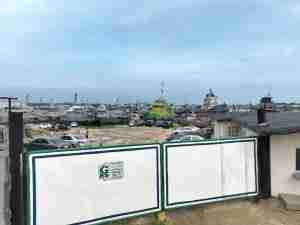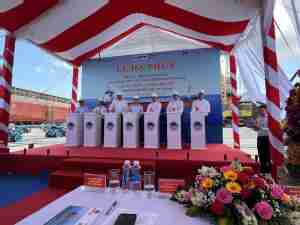A proposal to merge all five port agencies in the Vancouver region highlighted the August 2-6 annual meeting and conference of the Association of Canadian Port Authorities (ACPA).
Such a super-port would provide still stronger competition to US West Coast rivals, said Norman Stark, president and ceo of TSI Terminal Systems Inc., which operates the Vanterm and Deltaport box terminals.
He cited Copenhagen Malmo Port AB as a prime example on how the unified port concept works effectively - "two countries, two cities, one port."
The Canadian super-port would bring together the Vancouver Port Authority, Fraser River Port Authority, North Fraser Port Authority, Steveston Port Authority, and the District of Squamish in British Columbia.
The Port of Vancouver itself is already Canada's biggest port, handling 74 million metric tons of total cargo and 1.7 million teus. Current expansion plans are based on containerized cargo tripling by 2020, notably as a result of soaring trade with China.
Stark singled out a key advantage to port unification: "One large Vancouver Gateway port would enable collective land to be pooled, banked or divested."
He stressed there must be no repeat of an occurrence in the 1990s when prime waterfront property occupied by a sawmill was sold to an auto mall developer after the federal government turned away a bid by the Port of Vancouver.
Within the framework of "densification and not dilution of resources," Stark also struck out at financial support recently offered by the provincial and federal governments for investing in a big container terminal project due to come on stream in early 2007 at Prince Rupert, in northern British Columbia. Similar criticism was expressed recently by Rob Ritchie, president of Canadian Pacific Railway.
"Sound port investments," Stark said, "should not require government subsidies to make them viable. Moreover, TSI, P&O Ports, and Fraser Surrey Docks will be competing against a subsidized US terminal operator (Maher Terminals), who will be shipping US-bound containers and possibly some (other containers) to Eastern Canada."
While shying away from advocating the re-regulation of the trucking industry in British Columbia following a costly, six-week strike which ended in early August, Stark suggested that too many drivers and too many companies were at the heart of cut-throat pricing. "What if we had two drivers working two different shifts with one truck, in the same way taxi drivers use their asset?"
Stark said, "If we could get enough volume to double-shift our truck gates, we would be more than happy to stay open - it would be a more economic solution than building more gates, not to mention building more roads."
Once the British Columbia trucking industry undergoes necessary re-structuring, Stark said, "Importers, exporters and the industry at large will not be held ransom again."
Within three months, a federal and provincial government task force is to make recommendations for a long-term solution to trucking issues affecting the Vancouver area ports. (See separate report).
Compared with the United States, Stark went on, Canada has not elaborated a comprehensive national transportation strategy. In this regard, he said that proposed changes to the Canada Marine Act do not go far enough.
Whereas Canadian ports will gain access to federal funds for infrastructure improvements, Stark regretted that Bill C-61 ignores the lion's share of marine industry recommendations that deal with alternative financing methods, leveraging port assets and reducing port taxes and stipends.
The proposed legislation does increase borrowing limits for ports, but Stark questioned why Canadian ports had borrowing limits at all.
Michael Murphy, senior VP of the Canadian Chamber of Commerce, concurred with Stark's central message, underlining the needs for a well-crafted, multi-modal national transportation policy, for a long-term transportation infrastructure strategy and for competitive lev









